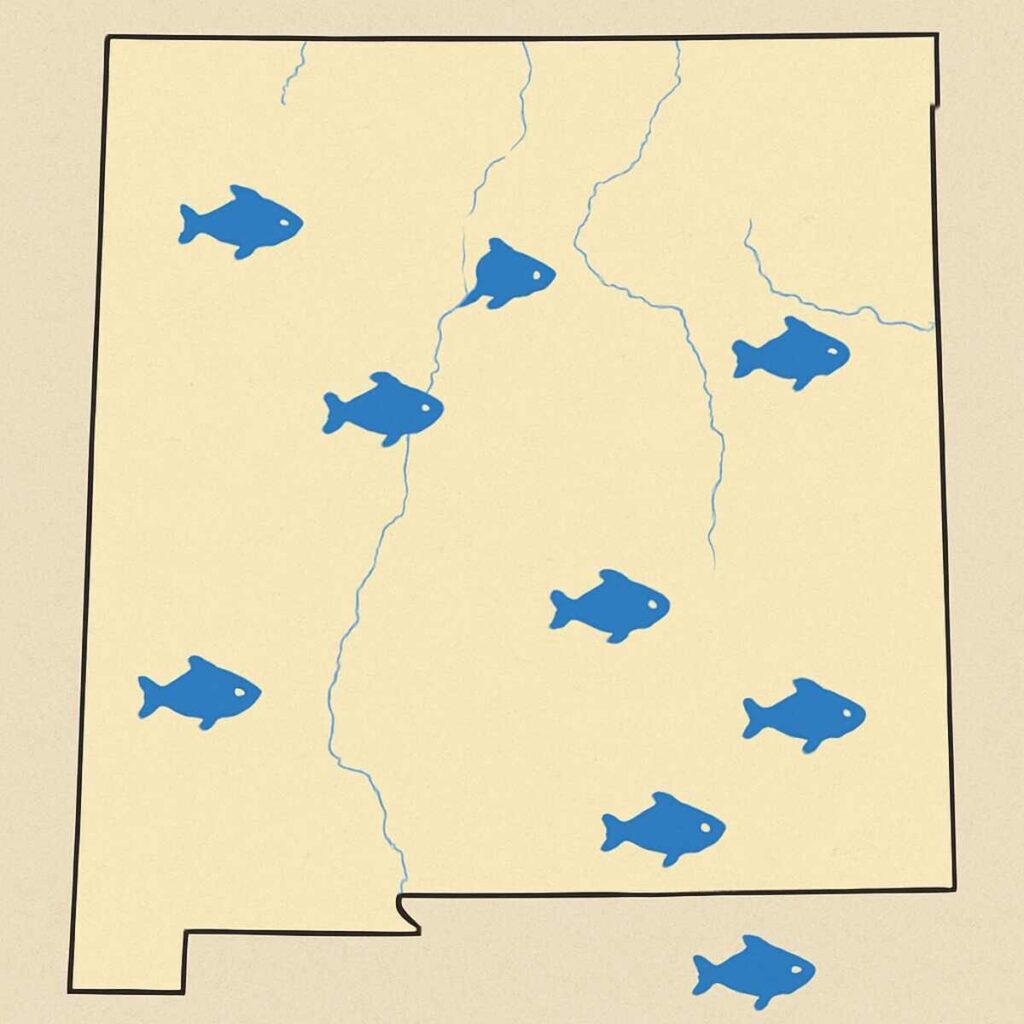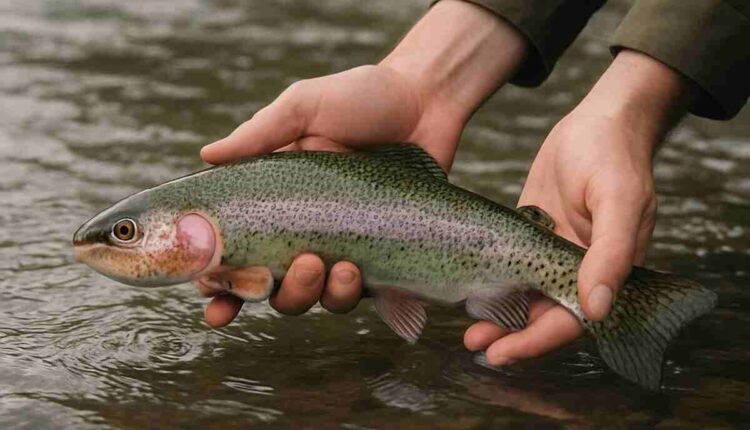Fish stocking is the process of raising fish in hatcheries and releasing them into various water bodies. This practice plays a pivotal role in replenishing fish populations, supporting recreational fishing, and aiding conservation efforts. To know more, check out SUARA89
The Basics of Fish Stocking
Fish stocking begins with the careful selection of fish species that are suited to specific environments. Hatcheries play a crucial role in breeding and nurturing fish until they are ready for release. This controlled environment ensures that fish grow healthy and strong before being introduced into the wild.
Hatcheries: The Starting Point
In New Mexico, fish stocking is overseen by the New Mexico Department of Game and Fish (NMDGF), which ensures the sustainability and balance of aquatic ecosystems. Hatcheries provide a safe and controlled environment where fish can be bred and raised until they reach the desired size and age for release.
The Role of Technology
Modern technology plays a significant role in the fish stocking process. From monitoring water quality in hatcheries to tracking the movement and growth of stocked fish, technology helps ensure that fish stocking efforts are effective and efficient. This technological integration is key to maintaining healthy fish populations.
Why Stock Fish?
Fish stocking serves multiple purposes, each contributing to the overall health and enjoyment of aquatic environments.
Recreation for Anglers
One of the primary reasons for fish stocking is to enhance recreational fishing opportunities. Many people love to fish, and stocking ensures there are plenty of fish in lakes and rivers for anglers to catch. This practice helps maintain interest in fishing as a hobby and sport.
Conservation Efforts
Stocking can help boost populations of threatened or endangered species. By carefully selecting species for stocking, conservationists can support the recovery of fish populations that have been affected by environmental changes or overfishing.
Maintaining Ecosystem Balance
Introducing fish to certain waters can help maintain a balanced ecosystem. Fish play a crucial role in the food chain, and stocking helps ensure that ecosystems remain healthy and diverse. This balance is essential for the survival of many aquatic species.
How Does New Mexico Stock Its Waters?

New Mexico’s fish stocking practices are quite methodical. The NMDGF releases a regular fish stocking report, which serves as a treasure map for anglers looking for the best fishing spots. This report details where and when fish will be stocked, so you can plan your fishing trips accordingly.
The Stocking Process
The process usually starts at a fish hatchery, where fish are bred and raised until they’re ready to be released. Once they’ve reached the right size and age, they’re transported to various lakes, rivers, and streams across New Mexico.
- Selection of Water Bodies: The choice of where to stock fish is crucial. Factors such as water quality, existing species, and accessibility for anglers are considered when selecting water bodies for stocking.
- Transport and Release: Fish are carefully transported to their new homes using specialized vehicles to ensure their safety and health during the journey. Upon arrival, they are gently released into the water, where they can acclimate and thrive.
Timing and Frequency
Stocking schedules can vary, but in New Mexico, there’s typically a focus on ensuring fish are stocked in time for fishing seasons, like spring and fall, when conditions are ideal for anglers.
- Seasonal Considerations: Different species may be stocked at different times of the year, depending on their life cycles and the environmental conditions of the water bodies.
- Frequency of Stocking: The frequency of stocking depends on various factors, including the demand for recreational fishing, the health of existing fish populations, and the goals of conservation programs.
Benefits of Fish Stocking in New Mexico
Fish stocking isn’t just about putting more fish in the water. It’s a practice with wide-ranging benefits.
Supporting Local Economies
Fishing is a popular pastime in New Mexico, and it draws tourists from all over. When anglers come to fish, they also spend money on lodging, food, and fishing gear, which supports local businesses and economies.
- Economic Impact: The influx of tourists and anglers contributes significantly to the local economy, providing jobs and supporting small businesses in the area.
- Community Development: Successful fish stocking programs can lead to the development of infrastructure and facilities that benefit both residents and visitors.
Enhancing Biodiversity
By stocking different species of fish, New Mexico helps maintain a diverse aquatic ecosystem. This diversity is crucial for the health of water bodies and the wildlife that depend on them.
- Ecological Balance: A diverse fish population helps maintain the ecological balance of aquatic environments, supporting a wide range of species.
- Habitat Restoration: Stocking efforts often go hand-in-hand with habitat restoration projects, ensuring that water bodies are suitable for a diverse range of species.
Recreational Opportunities
For those who love to fish, stocking ensures there are always plenty of opportunities. Whether you’re a seasoned angler or a beginner, there’s nothing like the thrill of casting your line and catching a fish.
- Access to Fishing: Stocking programs help ensure that fishing remains accessible to everyone, regardless of their skill level or experience.
- Community Engagement: Fishing events and competitions often revolve around stocked waters, bringing communities together and fostering a love for the outdoors.
How to Get Involved
If you’re interested in learning more or getting involved with New Mexico’s fish stocking efforts, there are several ways to do so.
Stay Informed
Keep an eye on the New Mexico Game and Fish stocking report. This report is your go-to resource for when and where fish are being stocked, so you can plan your fishing trips accordingly.
- Online Resources: The NMDGF website provides up-to-date information on stocking schedules, fishing regulations, and more.
- Social Media: Follow NMDGF on social media platforms to stay informed about the latest news, events, and updates.
Participate in Community Events
The NMDGF often hosts community events and workshops focused on fishing and conservation. These are great opportunities to learn more about fish stocking and meet fellow fishing enthusiasts.
- Workshops and Seminars: Attend educational sessions to gain insights into fish stocking practices and conservation efforts.
- Fishing Tournaments: Participate in local fishing tournaments to test your skills and meet other anglers.
Volunteer Opportunities
Consider volunteering with the NMDGF or local conservation groups. Volunteering is a fantastic way to get hands-on experience and contribute to the health and sustainability of New Mexico’s aquatic ecosystems.
- Habitat Restoration Projects: Join efforts to restore and enhance aquatic habitats, ensuring healthy environments for future fish populations.
- Educational Outreach: Help educate the public about the importance of fish stocking and conservation through outreach programs and events.
Conclusion
Fish stocking in New Mexico is an essential practice that supports recreational fishing, conservation, and local economies. By understanding the methods and purposes behind fish stocking, you can appreciate the intricate balance that keeps New Mexico’s waters thriving and learn how you can be part of this amazing process.
So, next time you’re planning a fishing trip in New Mexico, remember to check the fish stocking report and enjoy the plentiful fishing opportunities that this beautiful state has to offer. Happy fishing!


